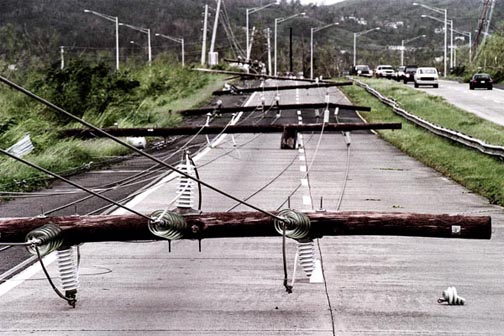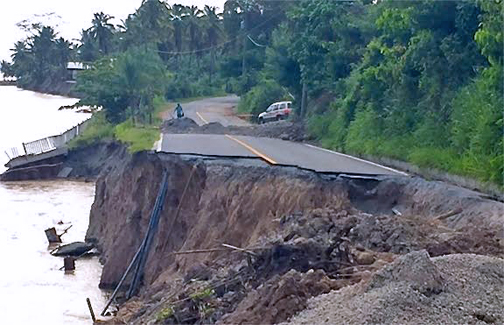Op-Ed: Dudley — Now is ‘perfect opportunity’ for P.R. start energy grid from scratch


Federal Reserve Bank of New York President William Dudley (Credit: Sin Comillas)
Hurricanes Irma and María did immense damage to Puerto Rico and the U.S. Virgin islands, severely exacerbating what were already very difficult economic conditions. My heart goes out to our fellow citizens who have suffered so much and who face a long and difficult recovery ahead.
María was the most devastating hurricane to hit Puerto Rico in nearly a century. Many lives were lost, homes and businesses suffered immense damage, and large parts of the island’s infrastructure and agriculture were destroyed.
Moreover, Puerto Rico’s power outage was, by far, the most severe in U.S. history, in terms of total customer-hours lost, and it will still likely take many more months to fully restore electricity and other critical infrastructure to all of the island’s residents.
As a result, a sizable number of residents went to the U.S. mainland in the weeks following María, and it still is unclear how many will return once circumstances improve.
Even before the storms hit, Puerto Rico was struggling with severe fiscal difficulties and a long period of poor economic performance. For over a decade, the island has been experiencing a shrinking economy, contracting employment, low and declining labor force participation, and persistent out-migration of residents to the mainland.
Furthermore, public debt reached a problematic level, and the Commonwealth and its instrumentalities — including the power and water authorities — lost their ability to borrow in the public markets. Defaults and ongoing debt restructuring efforts followed.
The combined impact of complex preexisting economic problems and the hurricanes has made recovery much more challenging. The loss of market access has severely hampered the ability of the government to mobilize resources to respond to the damage and rebuild and upgrade infrastructures.
One example is Puerto Rico’s electrical grid, which is a major obstacle to recovery. Even before María, Puerto Rico suffered frequent blackouts, and the high cost and unreliability of electricity had reduced business competitiveness.
Puerto Rico’s power plants are largely outdated and inefficient, and the electrical distribution system is poorly maintained and extremely fragile. In my mind, given this poor starting point, now is a perfect opportunity for Puerto Rico to essentially start from scratch and build a resilient power generation and distribution network.
I would assume that an emphasis on renewable energy would be part of this effort, especially given the dramatic fall in costs for this form of electricity generation. The challenge, of course, will be how to finance this investment, when the Commonwealth is already mired in debt.
Despite these woes, there are signs of resilience in Puerto Rico. As we will show, job losses following the storm were very substantial, totaling around 4 percent in Puerto. These losses are considerably steeper than after most major hurricanes that have hit the United States.
However, they are not as devastating as Katrina’s impact on the New Orleans economy more than a decade ago, which was and remains unprecedented. Nonetheless, the labor market, at least in Puerto Rico, appears to be stabilizing as jobs in sectors that were most affected — such as leisure and hospitality — have started to come back.
And, as repair and rebuilding efforts get underway, jobs are being created in sectors such as construction. These job gains are expected to continue for some time to come.
Looking ahead
Puerto Rico now must not only complete the recovery from the hurricane, but also do what is necessary to get on a sustainable economic and fiscal path. Given the island’s high debt, unfunded pension obligations, declining population, and now the hurricane, the outlook may seem grim.
But there are good reasons not to despair. As I have noted previously, New York City went through a similar crisis during the 1970s: its population was declining, the economy was in a five-year recession, and the city had literally run out of money to pay its employees and could not borrow in the debt markets. However, leaders had the courage to confront these problems head on, and they adopted a series of reforms, including the establishment of a fiscal oversight board and a more transparent budgeting process.
All of this helped transform the city from an increasingly blighted urban landscape to the vibrant economy of today. And, New York City is not the only example of a major turnaround. Now-dynamic cities such as Washington, D.C., Pittsburgh, and Seattle also went through wrenching economic and fiscal contractions.
While Puerto Rico’s path to prosperity will not look exactly like that of New York or other cities, history can provide valuable lessons, as well as hope for a better future.
In addition, Puerto Rico has a number of unique attributes and endowments that it can leverage as it seeks a path toward prosperity, including its educated and bilingual workforce, its proximity and access to markets on the U.S. mainland, and its extensive experience as a host to various major U.S. multinational corporations.
But, a recovery is not going to happen on its own. We at the New York Fed have made a number of suggestions over the years that we think can help improve Puerto Rico’s competitiveness and economic prospects. Some of these issues are now being addressed, and still more are at least being discussed.
Among others, lowering the costs and disincentives to doing business, helping island residents develop and use their human capital, and improving labor market opportunities are all important steps that must be taken.
On the fiscal side, the Financial Oversight and Management Board and the Commonwealth together will be making a series of difficult choices over the coming months. It will be critically important that these decisions put the Commonwealth on a sustainable fiscal path going forward.
As in other examples, such as New York City in the 1970s, the fiscal adjustment will be painful, and many important decisions will undoubtedly be unpopular. While the pain has been — and will continue to be — widely shared, it is also critical to seek ways to ensure that the benefits from the restoration of growth are shared broadly.
How exactly to make this work is an open question that I am certain the oversight board and its stakeholders will consider carefully over the coming months.
The New York Fed will continue to help in the best ways we can — by providing independent research and analysis, and by leveraging our convening authority to bring together stakeholders to share expertise, explore opportunities, and provide information to those who need it most.
We recently held two events on the island — one for small business owners impacted by the storm and another for credit unions. We plan to do more in the months and years ahead, and I look forward to gaining a better understanding of conditions on the ground and how we can help when I travel to Puerto Rico and the U.S. Virgin islands next month.








